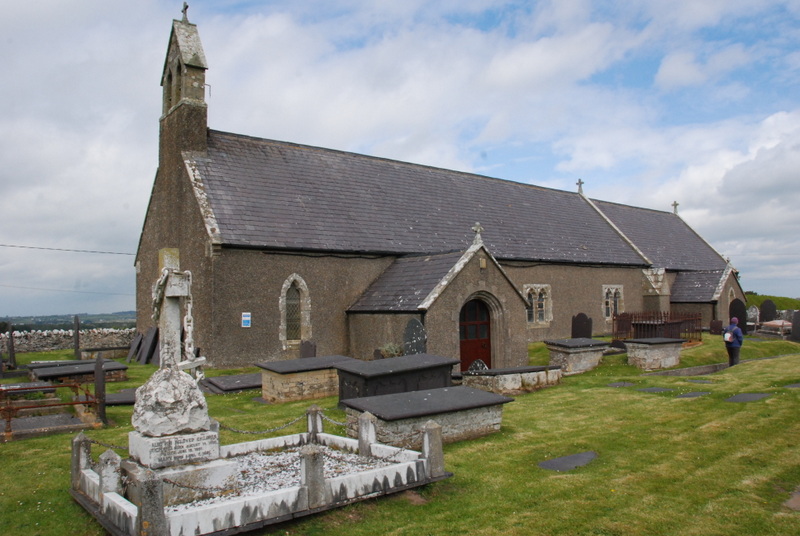I have to use
four-letter words to describe the weather today – wild and vile. It
was raining hard when we went to bed and when this stopped well into
the night, the wind got up. By morning we had both and we realised
that we were going to have to revise our plans.
Although the campsite
has wi-fi and the connection to the office was good, we couldn't use
the Internet because the system failed at the point where we had to
enter our payment. We explained this to the receptionist and he
invited us in to use B&B guests' login. This worked and although
the connection was slow, we were able to get our emails and post all
of the blog up to yesterday.
By the time that we had
finished that, it was after 11:00 but the weather was still vile and
we weren't in any hurry. We had intended to walk over Parys Mountain
but that would have been miserable in the rain so we plotted a
cross-country route to the other side of the island.
We knew that there was
a working windmill at Llynnon and we wanted to take a look at it for
two reasons. My brother Norman restored and ran a watermill in Dorset
and I wanted to see how a windmill compared to a watermill. I also
bake all of my own bread in a wood-fire oven that I have built in my
back garden and I wanted to try some of their stoneground flour.
The weather was no
better when we got there – the rain was coming in horizontally –
and we ran across the car park to the shop. Much to my surprise,
there was no sign of flour in the shop and I asked why this was.
Apparently the mill had to stop production for health and safety
reasons. The miller, who had been running the mill for many years,
has a health and safety qualification to cover climbing and the use
of a harness when he has to set the sails. This he does with a second
person present in case he gets into trouble. The authorities have now
told him that the second person must also have this qualification so
that they could help him if needed. I don't understand the logic of
this. If the miller gets into trouble then surely the second person
should call the emergency services rather than also going up the
sails, leaving nobody on the ground. Anyway, the result of this is
that the miller can't produce flour until he has someone else trained
and this meant that I couldn't buy any flour. It didn't help when the
man in the shop told me that the flour made fantastic bread and that
he could eat a whole loaf in one sitting!
We were able to visit
the mill and this was very interesting. It seemed a lot less
complicated than Norman's mill but it was, of course, much more
compact. Despite that, it had three grinding stones and it was
intriguing to see how the power was transferred from the sails to the
stones.
To our surprise there
is also a reconstructed Bronze Age Village next to the mill and a
visit to that was included in the price of a visit to the mill. There
are no Bronze Age remains here but the reconstruction is based on
settlements found on Anglesey. We passed the bank and ditch defences
at a run, heading for the shelter of one of the two large thatched
round houses. These are very impressive – a fire made the first one
quite cosy and dry despite the conditions outside. The first hut had
furniture, sleeping area and examples of everyday household equipment
and in the second a DVD was showing that explained more about Bronze
Age life the construction of the site. Well worth the visit.
We drove on to Llygwy,
just outside Moelfre where we pitched at our campsite, a Caravan Club
CL at Plas Llygwy farm. We hunkered down for the rest of the day.
Photos: The Bronze Age
settlement with Llynnon Mill in the background; Two of the three
pairs of mill stones.



















































